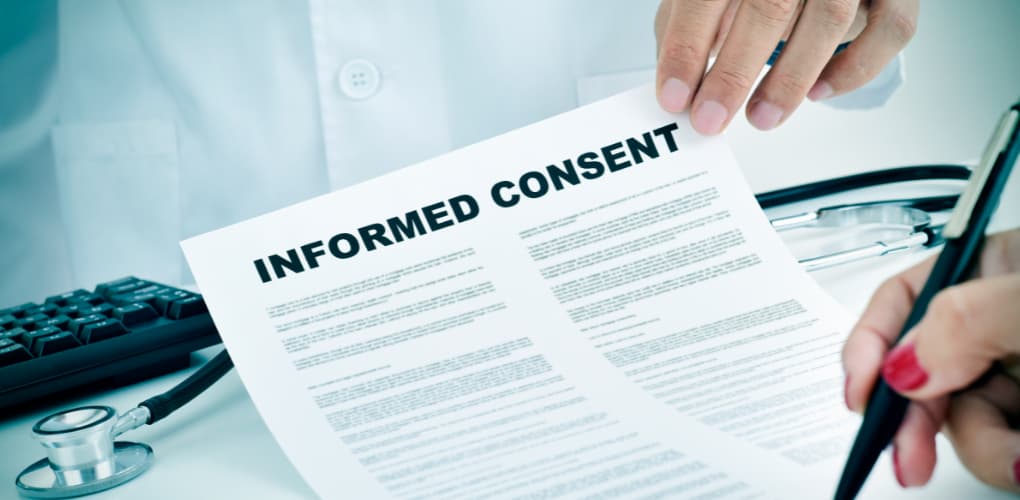The Importance of Documenting Consent in Dentistry

It’s vital that dentists understand the importance of documenting consent in dentistry. The law and best practices require that informed consent be obtained before treatment begins on a patient. The failure to do so may result in malpractice liability.
Dentists should not rely on “implied consent.” “Implied consent” generally refers to the assumption that you have consent to proceed with an examination and/or any procedures because the patient traveled to the practice, sat in the dental chair, answered various questions and did not object. This type of consent leaves the dentists open to claims that consent was not obtained for a treatment and/or procedure.
To protect themselves and to keep the patient as informed as possible, it is best to have a conversation about the treatment or procedure with your patient. Then, document that discussion to prove you gave the necessary information and obtained an informed consent. To further protect yourself, time and date stamp that the conversation occurred in the dental record and have the patient acknowledge it (if possible), agreeing that they understand and consent to the treatment or procedure.
In some instances, like cosmetic work (including implants, dentures or bridges), patients may expect certain results or “guarantees.” Dental consent discussions and forms should include that there is no warranty or guarantee for any specific result. To further protect the dentist and practice, it is ideal that the patient initials on paper or clicks “agree” if the form is electronic.
When your patient acknowledges this, it can be very helpful in a dentist’s defense. While it won’t give you “immunity” if your patient is unhappy, it can help you win the claim by giving you an argument in response, as opposed to if the patient didn’t sign the consent form.
MLMIC policyholders can contact a team of risk management professionals 24/7 at no additional cost by calling (844) 667-5291 or emailing hotline@tmglawny.com. For more resources for dentists, visit the MLMIC Dental blog, The Scope: Dental Edition, Dental Impressions and our Twitter and LinkedIn pages.



